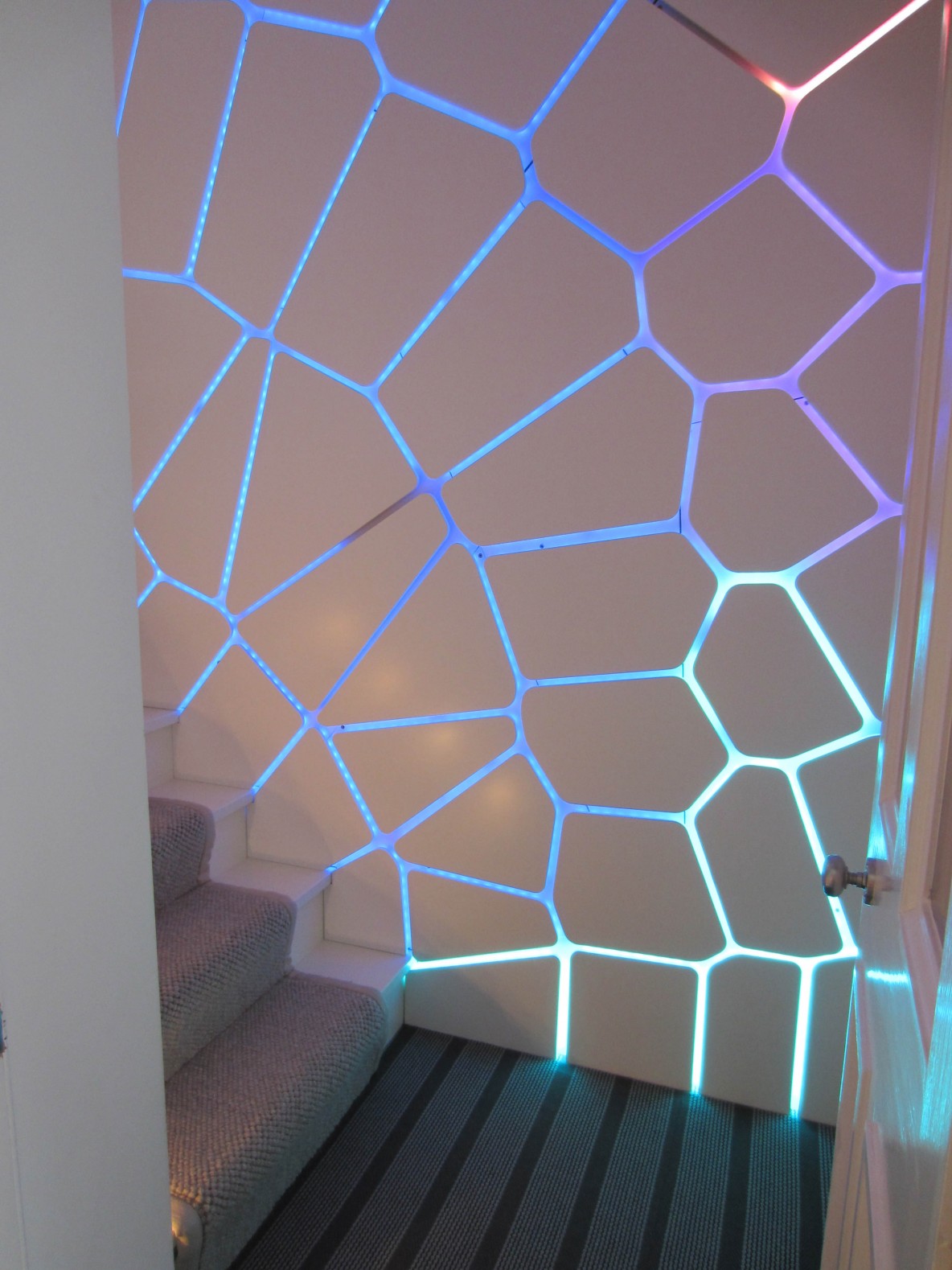Spidey Wall is the name for a physical wall lit up by multiple addressable LED strips. This program is an LPC1768 web server to control the wall from a browser.
Dependencies: EthernetInterfacePlusHostname RdWebServer mbed-rtos mbed
This project is part of a Light-Wall using addressable LED strips (WS2801). I have published a few posts on my blog about the construction of the wall and building a game to play on it (PacMan). I have also had a guest post from a friend who has set his children the task of producing some interesting animations. The original post is http://robdobson.com/2015/07/spidey-wall/ 
So far, however, I hadn't fully connected the physical (and electronic) wall with the web-browser creations to drive it. This project is hopefully the final link. A fast and reliable web server using REST commands to drive the 1686 LEDs in the Spidey Wall from code running in a browser (say on an iPad while you are playing a game).
The approach taken here results in the ability to control the RGB values of all 1686 LEDs at a rate of 20 frames per second.
A blog post describing the whole thing is here:
http://robdobson.com/2015/08/a-reliable-mbed-webserver/
Diff: Idler.cpp
- Revision:
- 6:8df79fe1afcd
- Parent:
- 5:910909f34907
--- a/Idler.cpp Tue Sep 01 15:53:52 2015 +0000
+++ b/Idler.cpp Thu Sep 03 20:17:23 2015 +0000
@@ -2,6 +2,7 @@
#include "Idler.h"
DigitalOut* Idler::_pStatusLed = NULL;
+bool Idler::_isRunning = false;
bool Idler::_isIdle = true;
unsigned int Idler::_stepCount = 0;
DrawingManager* Idler::_pDrawingManager = NULL;
@@ -17,8 +18,17 @@
_idleTicker.attach(&tick, 0.1);
}
+void Idler::start()
+{
+ _isRunning = true;
+}
+
void Idler::tick()
{
+ // Check if we are running
+ if (!_isRunning)
+ return;
+
// Check if idle
if (!_isIdle)
{